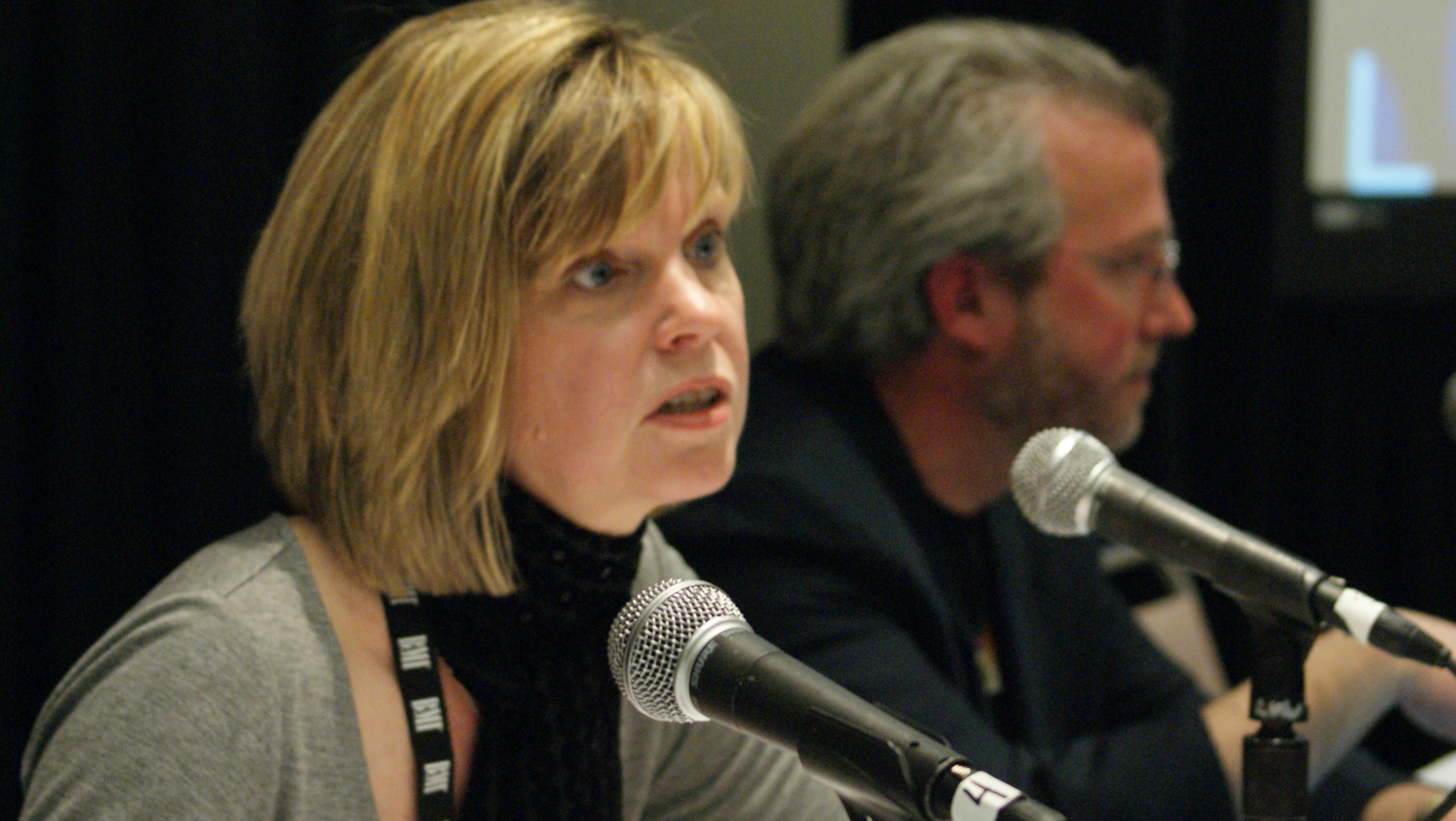
“Tenure is broken and it’s holding universities back,” said the panelists at “Universities in the Free Era.
Glenn Platt from the Miami University Armstrong Institute for Interactive Media Studies and Peg Faimon from Miami University Design Collaborative talked about why they see the traditional university structure collapsing. Platt said tenure holds universities back the most. When he started teaching, a counselor told Platt that “universities change one funeral at a time.”
They both believe that because of the collapsing paid university structure we might see new forms of higher education cropping up.
The problems facing the traditional university system are pretty numerous. First of all, the price of attending a private university averages about $25,000 per school year. Public universities are less expensive because of state appropriations, but those appropriations are decreasing every year. The future of univeristies may be that public institutions will have the same high price value as private colleges and universities.
Platt and Faimon used an online, collaborative model as an example to a possible alternative to the traditional university. They said TED, iTunes U, YouTube.edu all offer content previously only taught at a university setting. Platt said Singularity University is taking the TED model approach and trying to form a degree program around it. As more of this knowledge gets out into the public sphere other universities are stepping in as editors and moderators. Even traditional universities are beginning to offer Open Courseware, free lectures, notes and exams on an online basis. MIT has received a lot of the recognition for providing this structure, but they are not the only institute of higher learning to offer an online example.
Platt and Faimon did not forget about the role of the traditional professor. They said the profession would need to evolve. They believe the traditional professor would have to take on new responsibilities, instead of just talking at their students and expecting them to write everything down. Professors should be prepared to wear many hats, including that of the project manager. The “new” professor works with students so they can accomplish they’re own goals. “Think of the professor as an angel investor,” said Platt. They should map out a road for someone to be successful. The professor should be a life coach, providing students with a ‘yes you can’ attitude.

Permalink
They really need to do something about he current college situation. It’s not just colleges though that are the issue. High schools across America are facing a very uncertain plight. Here in Hawaii like a few other places they have Furlough Friday’s and early release on Wed. States are going broke and financial situations amongst households are not what they once were. Education is slipping in the country and need to do something fast!
Permalink
The things I found most fascinating in this presentation were the idea that the mission of a university should be to “seed innovation,” and that the new professor should be an experience designer, a resource allocator that provides access to a network, a curator of knowledge and, as Scott says above, a life coach, one that conveys the “you can do it” attitude. The presenters had lots of great ideas about an open source university, giving more than you get, and thinking like social entrepreneurs. Really, one of the most inspirational panels I attended.
Permalink
Permalink